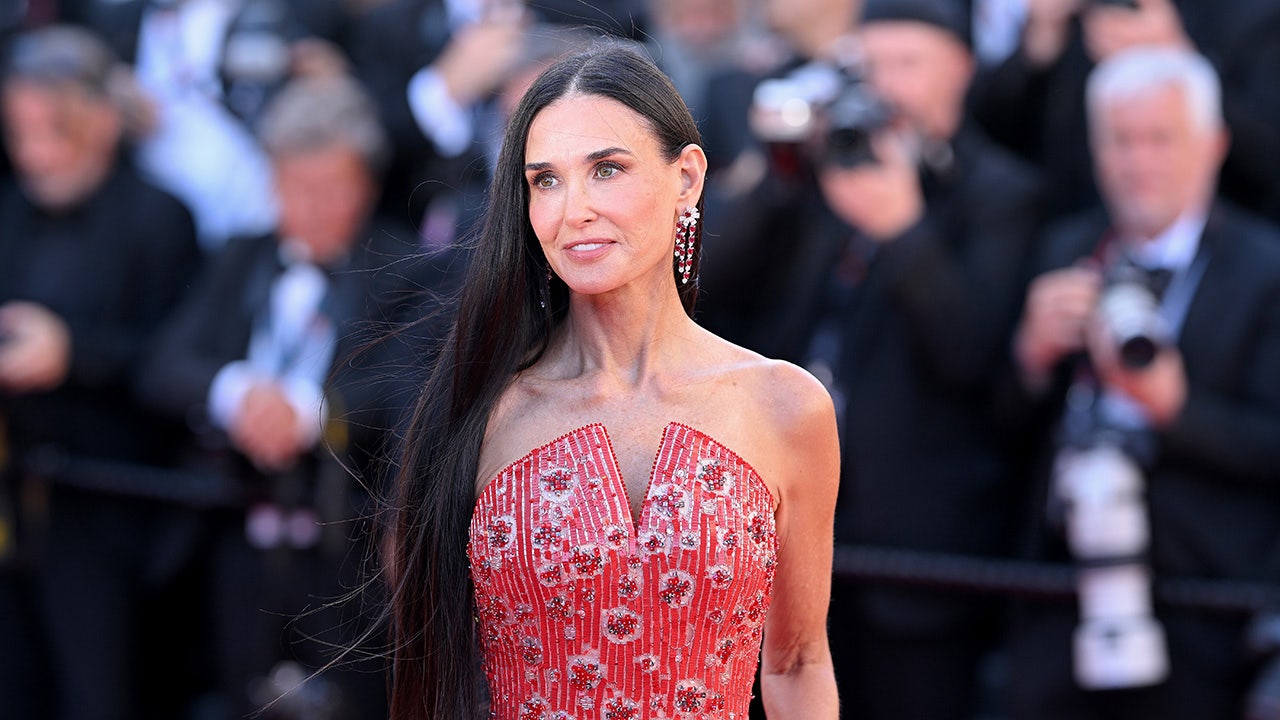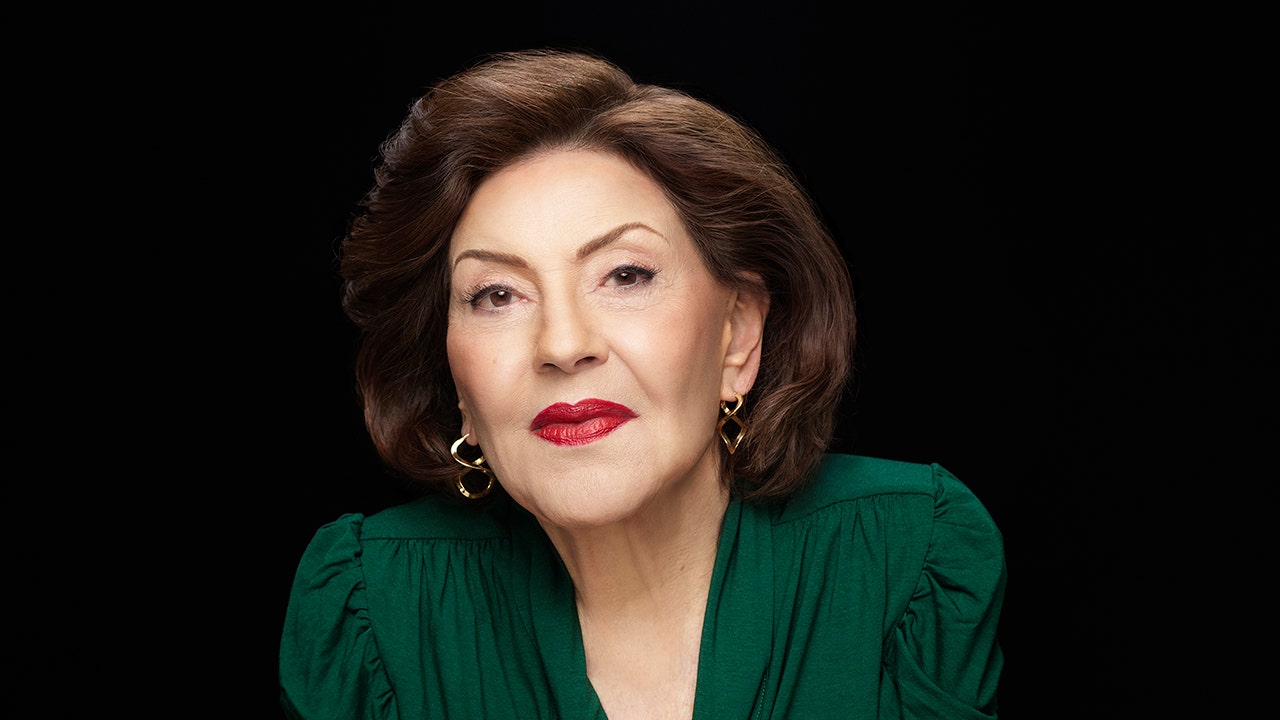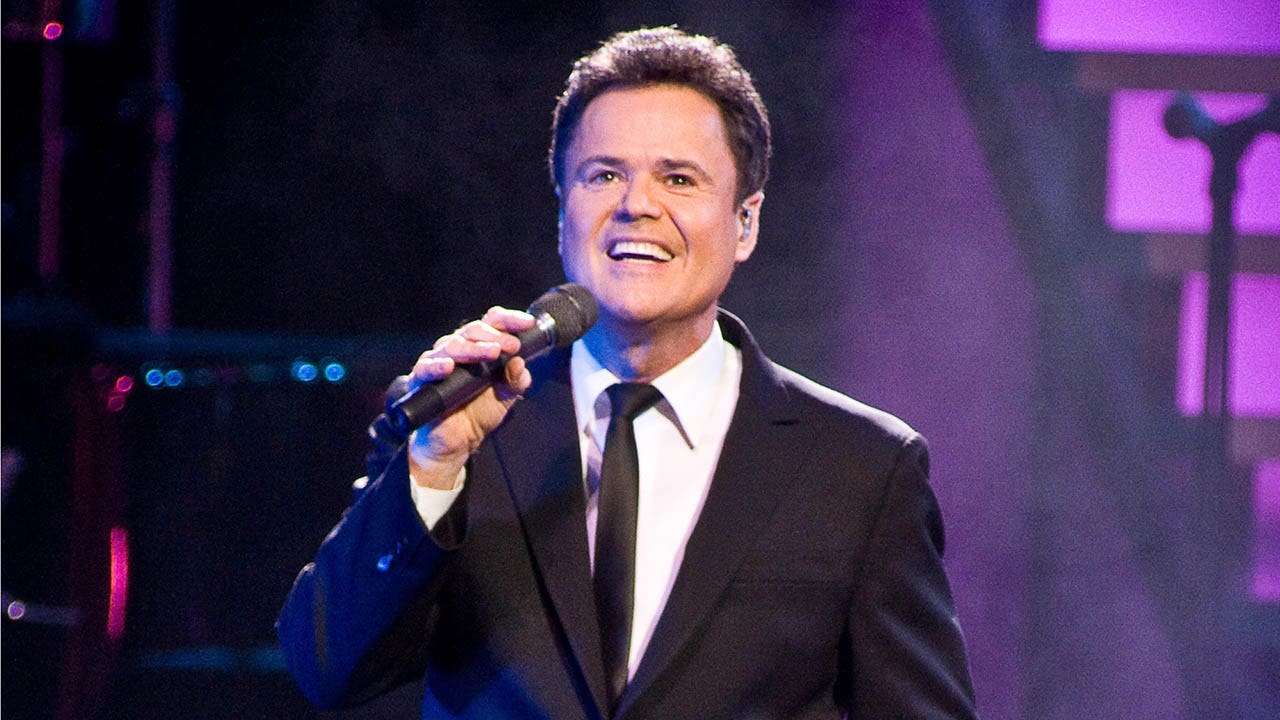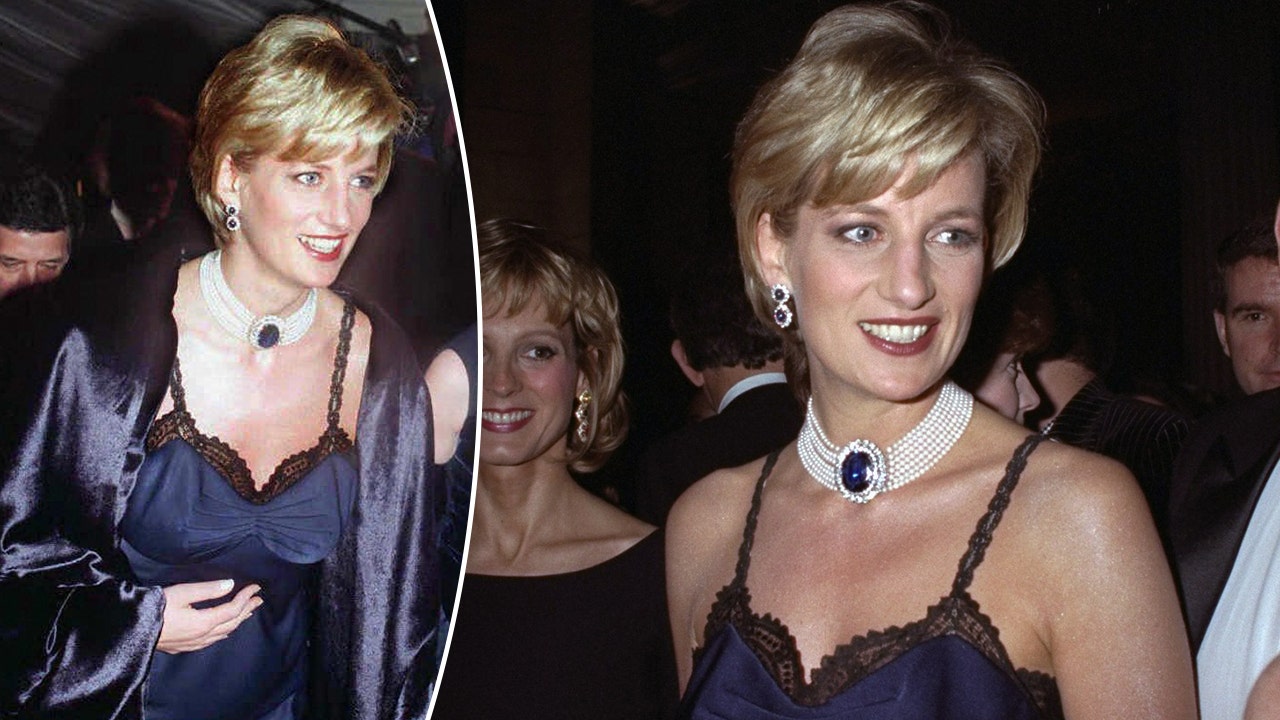Capturing what would become some of the final moments of the Beatles all together was never director Michael Lindsay-Hogg’s goal while making “Let It Be.”
“When we were filming, there was no sense that they would break up,” Lindsay-Hogg told Fox News Digital. “There was a sense that they might have gone off and made solo albums like people do these days, but the nucleus was going to stay together, and that’s what I thought many people thought.
“And then when we were shooting the movie and editing the movie and re-editing the movie and screening the movie, which took from the end of January through to November, they were all together still. So, I had no idea that they were going to break up — and then to break up in such an almost violent way that suddenly there were the Beatles now, the Beatles aren’t anymore. I don’t think a lot of people did either.” However, Lindsay-Hogg did say he noticed some tension within the band.
“Let It Be” was filmed in January 1969 and later released in April 1970, just a month after the Beatles formally broke up for good.
“Let It Be” director Michael Lindsay-Hogg said during filming “there was no sense” the Beatles would break up, even as he captured “tension arising.” (Getty Images/Disney+)
PAUL MCCARTNEY ALMOST QUIT MUSIC AFTER THE BEATLES BROKE UP
The documentary’s initial reception was chilly, mostly due to the public mourning the band’s split.
“And so the people went to see ‘Let It Be’ with sadness in their hearts, thinking, ‘I’ll never see the Beatles together again,” Lindsay-Hogg explained in a press release for the film’s re-release on Disney+. “‘I will never have that joy again,’ and it very much darkened the perception of the film. But, in fact, how often do you get to see artists of this stature working together to make what they hear in their heads into songs?
“And then you get to the roof, and you see their excitement, camaraderie and sheer joy in playing together again as a group and know, as we do now, that it was the final time. And we view it with the full understanding of who they were and still are and a little poignancy.”
Since the 1980s, “Let It Be” has been largely unavailable until its current re-release with a vibrant restoration led by Peter Jackson’s company, Park Road Post Production.
Jackson also worked on 2021’s “The Beatles: Get Back,” which utilized hours and hours of unused footage shot during the production of “Let It Be” to paint an expanded picture of John Lennon, Paul McCartney, George Harrison and Ringo Starr working together on what would become their final album.
“Let It Be” showcases the Beatles’ behind-the-scenes process for what would become their final album. (© 2024 Apple Corps Ltd.)
Lindsay-Hogg credits the popularity of “Get Back,” along with Jackson’s interest and support of “Let It Be,” for helping bring the rarely seen documentary back to the public eye.
“Everyone has known that ‘Let It Be’ still exists and has existed for 50 years. And I think the very, very warm reception that ‘Get Back’ had, plus Peter Jackson saying there are two movies, one is ‘Get Back,’ one is ‘Let It Be,’” he said. “They’re not the same movie. They’re two very distinct and different movies, and they both are about telling the same story, but in a very different point of view about the Beatles.
“And the Beatles still are a very, very potent force in the world. We know that when we’re in the car and listen to the radio. And one of the, even the earliest songs come on, how it lifts our spirits, how it gives us a sense of possibility.”
Lindsay-Hogg fondly recalled being in the room as history happened, even if he didn’t always realize which parts would become famous.
Lindsay-Hogg admitted he didn’t have the camera focused on Paul McCartney while he was working on “The Long and Winding Road,” but at the time he had no idea he was writing a hit song. (© 2024 Apple Corps Ltd.)
CLICK HERE TO SIGN UP FOR THE ENTERTAINMENT NEWSLETTER
He noted one piece of footage focused on Lennon speaking with someone, while in the background McCartney is working out the music for “The Long and Winding Road.”
“But, at that point, we got hints that these were going to be great songs, but we hadn’t heard them before. So, just as someone going through the chords of what turns out to be ‘Long and Winding Road’ … we are learning what the great songs are as the audience [is] learning what the great songs are. So, sure, if I [had] hindsight, I’d have been [focused] on Paul for ‘Long and Winding Road, but that’s not what happened.”
The technology available at the time also proved to be an issue, limiting how Lindsay-Hogg captured the behind-the-scenes moments among the band.
“Let It Be” features a tense exchange between McCartney and Harrison about Harrison’s involvement in the songwriting process and how he wants to play his guitar parts. As audiences later learned in “Get Back,” it was after that moment that Harrison temporarily quit the band before being talked into returning.
George Harrison temporarily left the band during production of “Let It Be.” (Ethan A. Russell. © 2024 Apple Corps Ltd.)
RINGO STARR ON THE BEATLES’ RAPID RISE TO FAME: ‘WE ALL WENT MAD AT DIFFERENT TIMES’
“I had that in the original,” Lindsay-Hogg explained, saying he “felt there was a little tension arising between them.”
He decided to “put a little microphone in the flowerpot” on the table where he and the band typically had lunch in hopes of recording more information on Harrison’s departure.
“But because the technology wasn’t very good in 1969, when it came back, and I heard it after lunch, all I could hear was the sounds of knives and forks and on the plates, people laughing on the other side of the room. And I couldn’t hear any proper conversation.
“So, that would have been the key to me to be able to use that footage. And, so, since there were four Beatles to start with, four Beatles at the end, we didn’t need the footage to tell that bit of ‘Let It Be.’”
Because the film started and ended with The Beatles in tact, Lindsay-Hogg said he opted to leave out most of Harrison and McCartney’s disagreement and his temporary departure. (Bruce McBroom/© Apple Corps Ltd.)
In “Get Back,” Jackson was able to “strip the tracks” from the flowerpot recording and reveal “a really important conversation between Paul and John about their own relationship, how they see their relationship, and also about how they see the way they’ve been treating George,” Lindsay-Hogg said.
“And that’s because Peter was able to clean up the audio, which we weren’t able to clean up in 1969. So, if I’d had that stuff in ’69, I would have put that in, but at least Peter did.”
Lindsay-Hogg also noted that “the Beatles were the producers as well as the stars of the movie, so if they didn’t like something,” they could have had it removed,” but “they liked pretty much everything.”
According to Lindsay-Hogg, he and McCartney have spoken on and off over the years about “Let It Be,” saying it has been “mainly me saying, ‘Well, what are we going to do about it?’ Because he always said he liked it and thought it should come out again.”
According to Lindsay-Hogg, McCartney has “always said he liked” the documentary and “thought it should come out again.” (Harry Durrant/Getty Images)
LIKE WHAT YOU’RE READING? CLICK HERE FOR MORE ENTERTAINMENT NEWS
As filming morphed from plans to be a live TV special to what became the documentary “Let It Be,” Lindsay-Hogg also focused on being as unobtrusive as possible.
“I was watching all the time, what was going on, once it turned into a documentary and, in my role as director, I was conscious of at certain points, the camera’s not intruding on them,” he said.
He cited the scene of McCartney and Harrison disagreeing, revealing the reason some of it is blurry is because “I got the cameraman to go up into the gantry, so he wouldn’t be on the floor. [You] wouldn’t know he’s there. And then if you look at the other shot we have, I got that camera to go to the dock doors at the back, back, back in the studio, [with a] long lens.
“And, so, Paul is very fuzzy and out of focus on the left side. And George is hardly in focus on the right side, but I felt, even though I was fascinated by what was going on, I didn’t want the cameras to appear to them to be in a prying position.
“And, so, I was very aware of having a certain responsibility to capture what was going as best I could, because it was an unusual job they asked me to do, which was, you know, to watch them working.
Lindsay-Hogg said he tried to stay as far out of the way of the band as possible while capturing as much footage as possible. (2024 Apple Corps Ltd.)
“I knew there was an historical significance to what turned out to be ‘Let It Be’ and ‘Get Back.’ Because [the Beatles] did change the world. Not only are they wonderful musicians and extraordinary people with a story, which is both joyful and tragic, with what happened to John and George, but there was a time that they did change the world, and they deserved to. They’re very smart, and they’re incredibly talented.”
“Let It Be” features one of the Beatles’ final live performances together, a semi-impromptu rooftop concert on top of their label, Apple, in January 1969.
“Let It Be” features one of the final live performances of the Beatles, their semi-impromptu rooftop concert. (than A. Russell. © 2024 Apple Corps Ltd.)
At the time, neighbors actually complained, and police were called, but Lindsay-Hogg explained that where the building was, in Saville Row, was a more “upper-class area of London” and not exactly welcoming to a group of young upstart rockers.
“It was a time, which is very hard to imagine if you weren’t there, there was a very distinct line drawn between people of a certain age and the younger people,” Lindsay-Hogg said.
He noted there was a generational divide between the older folks, who lived through the Great Depression and WWII, and their children, “the kids of the war who turned into the Beatles and the Rolling Stones.”
Lindsay-Hogg wasn’t “surprised” at all by the divide, and because the area included a lot of high-end tailors, fabric shops and other businesses, “I expected we were going to get trouble.”
The concert remains his favorite moment in the film, capturing what made the Beatles so special.
Lindsay-Hogg said the rooftop concert finale reminds him of the Beatles “as they were in their most glorious days.” (Getty Images)
“When you see the four of them playing like they played together when they were teenagers. And having the sort of sense of discovery that they had as teenagers, and the sense of excitement coming at this point in the movie, the conclusion of the movie, when we’d seen them as men going in different directions, we now see them as they were in their most glorious days,” Lindsay-Hogg said.
“Let It Be” is available now on Disney+




